
Norway is a paradise for the adventurous ice climber. While most British visitors to Norway flock to Rjukan, the rest of the country remains largely overlooked. Rjukan is a great playground - but why queue to climb when elsewhere in Norway there are world-class ice climbing areas, where ice cascades everywhere you look, and you are unlikely to see another climber during your whole trip? The far north is such a place.
The area around Tromsø in Northern Norway falls within the Arctic Circle. It offers an unusually wide variety of climbing venues: high mountain icefalls, long routes over the sea and the fjords, atmospheric climbs hidden in narrow gorges - including world class climbing in the deepest gorge in Northern Europe - as well as the valley climbing found more commonly elsewhere. In the northern latitudes, you can expect greater reliability of ice conditions too.
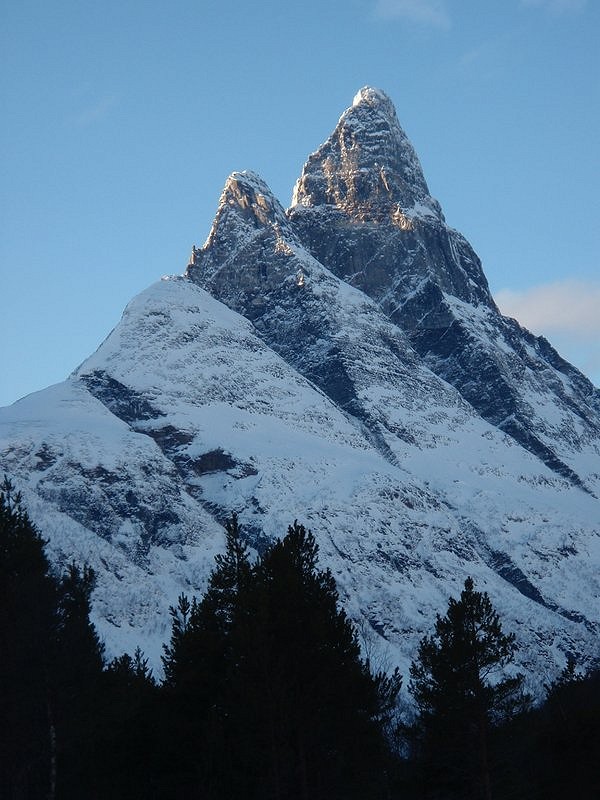
As elsewhere in Norway, the area is well served by roads and other facilities. Despite this you are always aware you are on the edge of the great arctic wilderness. It's full of wildlife too, and often overlooked by the stunning Northern Lights.
There are routes for every type of ice climber here, whether you are looking for grade 3 classics or world-class WI7 test-pieces. A trip here will be filled with three-star climbing, on virgin ice, and when you leave you'll have barely scratched the surface.
How does it compare with Rjukan?
We served our apprenticeship at Rjukan, and have still climbed more routes there than anywhere else. It certainly has its advantages – the main one being the concentrated nature of the climbing. But you still need a car to get there from the airport, and once there, to get to Kong Vinter and Mael. It has some classic routes including Lipton and Juvsøyla (the only route we'd want to go back for). The place also has the legendary story of the wartime saboteurs to add a degree of mystique to it. But we haven't been back for a few years now. Conditions aren't always reliable, as shown by the annual panic in these very forums, and the number of visitors seem to increase every year - we genuinely don't think we could go back to climbing in an area that crowded. Last time Nick was there, a guy even clipped into his screws midway through a pitch – he was so terrified one couldn't really complain despite the obvious hazard. Deep in that industrial gorge, it's not scenically as varied as elsewhere either.
Conditions vary everywhere, of course, and 2017 seemed by all accounts to be a lean year for ice up north as well. We went there worried, but in the Arctic average temperatures are lower - and sure enough the vast majority of routes were formed. Looking hard for new climbs, we saw more and more routes each day. We have visited the region three times, over eleven weeks, and have only seen one other pair of climbers, who were there only because they saw our internet guide. Unless this article convinces the entire population of UK ice climbers to change venue overnight, you will not have to queue, or even see other climbers. Oh, and the other consequence of this is a lot of swinging of axes – there is no hooking your way up routes here. If the weather is reasonable, you should expect to drive for between twenty minutes and an hour each day – definitely more than Rjukan – and if the weather is unreasonable, then a lot longer, but those Norwegians can work miracles clearing the roads.
The Modest Norwegian
The Norwegians have a very different ethic from us Brits – essentially they are modest to the point of silence. You aren't very likely to climb a new route here, even if you think you have. Austrian Guide Albert Leichtfried visited in 2010 and made the mistake of naming some of the climbs he did (a perfectly natural thing to do if you aren't Norwegian), and was branded an 'ignorant visitor' on the comments section of our guide by a local. Routes here have been climbed at least since the '80s, but the locals just show up, climb, and go home – maybe mentioning it to their mates. There is no guidebook other than our wee guide, but that is part of the charm (we hope we haven't ruined it) – there is tonnes left to find, or re-discover, I am sure.
Areas
Lyngen
The Lyngen Alps is a famous ski touring area, the season for which picks up in March, but you don't need to go 'into' the Alps to find ice (heaven knows what awaits there though!) All down the eastern side of the peninsula, above the road, are icefalls – more than twenty significant ones. Walk-ins range from 15 – 90 minutes depending on snow conditions (oh, how the walk-in time depends on snow conditions…). Most are two to four pitches and all are of high quality.
When we first visited Kåfjorddalen in 2011 we found a few routes near the fjord end of the valley. Although we had heard about canyons toward the end of the valley, we never faced the walk-in. This year we did, and discovered a fortnight's worth of climbing just in this valley. The two canyons are simply epic – Sabetjohka canyon has a suspension bridge, 170m above the floor of the gorge, used for bungee jumping in the summer, and Ørndalen is the deepest canyon in Northern Europe, with walls that must be 500m high. There are a lot of routes here including a mighty WI6 at the back of Ørndalen, that had collapsed when we were there (a cause for some relief on our part).
Tamokdalen East, Kitdalen, Signaldalen East and Skibotndalen
These valleys all hold a multitude of routes and although they don't have quite the concentration of climbs as the areas previously mentioned, are all worth visiting on any trip. Away from the coast and a little higher, the ice in these valleys tends to remain in condition longer, offering plenty to do during any brief warm spell.
Beyond
Besides the Lyngen and Nord Troms area described above, there is a wealth of other destinations accessible from Tromsø – all with slightly more information online than is available for the area described above (at least until we wrote our guide). We have spent time on the island in Senja: good for ice, seemingly even better for those looking for Scottish mixed-style climbing; Sordalen: home of big lines, including the great multi-pitch Skredbekken; and Spansdalen: home of another well-known route, Henrikkefossen. These areas are all worth a visit.
As a side note, we've also visited the Aurland / Lærdal area, which is much further south, following the fjord inland from Bergen. This place, we have no doubt, would be a contender for the number one venue in the world - in a good year, but being at a lower latitude and at low altitude (the climbs pretty much rise out the fjord) is far more fickle. We visited during a warmer spell and were forced to drive high to find routes, including to Vang and Hemsedal. If you can afford to book last minute with word that it is a bumper season then definitely consider going here.
Top Tips
- The snow can make or break the approach – probably as much as anywhere else, but you won't find trodden down paths here. You will need skis or snowshoes. We estimated one walk-in at 25mins, two and a half hours later we got to the route. The last couple of hundred metres to the base can often be a torrid affair. Plan accordingly.
- Speaking of snow, you need to be practised in your avalanche assessment. We've turned round after hours of walking due to the final approach being wind-slabbed, and we've backed off a route as the slope below was sheltered and having snow dumped on it. A healthy air of paranoia is advisable.
- If climbing multiple routes in the same place, particularly in the canyons, consider stashing the packs and walking out with minimal kit. Just be sure of the weather forecast (which, being Norwegian, tends to be excellent)
- If you are used to hooked out routes, train extra, extra hard. You won't find them here.
- Take binoculars. Oh, and don't try to spot routes while driving. It's really rather embarrassing having to ask a Norwegian farmer to pull you out a ditch with his tractor, although he will surely do it as they are lovely folk.
- There are a lot of icefalls right on the road, or only a few minutes walk away on nearby cliffs. These make for great short days or an ideal zero-stress warm up for rusty Brits who have a had a year (or three) off the ice. And when I say 'on the road', I mean my pack got sprayed by a gritting lorry and I had to step off the road if a lorry was coming while I was belaying (think of that icefall by the bend in the road in Rjukan, you know the one)!

Must Do Routes
Here are what we think are some top routes – referencing them can be a problem when you know they've been climbed but not named! Please visit http://northnorwayice.blogspot.co.uk/ for more information. We've only listed what we have personally climbed and thus they are within a narrow grade range – if you climb harder, see what the professionals have done under the 'further inspiration' section below. If you are after easier climbing, there is no shortage of routes, believe us.
Kåfjorddalen
Boršojohka (240m, WI3/4) – A long reasonably graded route with next to no walk in
Gullivers Reisen (130m, WI5) – An atmospheric climb buried deep in the back of a cleft
Big route at the back of Ørndalen (200m, WI6) – Epic, has been climbed complete and after collapse
Big curtain toward the end of Sabetjohka (120m, WI5) – One of many three star routes in this gorge, and there are probably more further up (the river wasn't frozen past this point, in 2017)
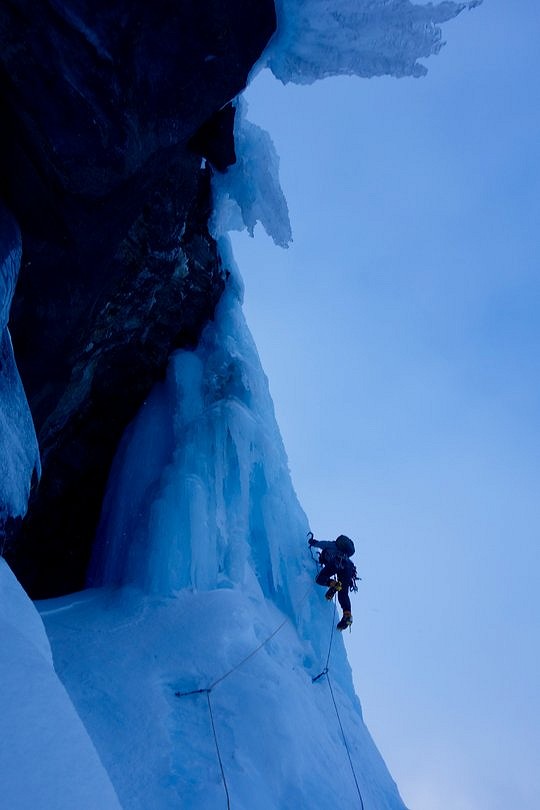
Lyngen
Cathedral (170m, WI4+) – A towering route overlooking the fjord with some really funky ice formations when we did it
Lyngsdalsfossen (110m, WI4) – The big obvious line inland from Fluruflaten provides a wide curtain of ice
Tamokdalen, Kitdalen, Signaldalen and Skibotndalen
Gehsteig (70m, WI5+), Roadside – A steep pillar of great quality with harder variations to the sides
Bogelva (240m, WI5), Kitdalen – A meaty walk in, but a meaty line, ending with one of 'those' pillars
Hattavarri Prime (90m, WI5), off Tamokdalen – One of a few routes on this face, hidden from the road, provides a very exposed route of great quality - if you can safely cross the slope to get to it
The Charming Sting (90m, WI4+), Nordallselva, off Skibotndalen – Not being able to see more than the bottom third, we climbed expecting not much but ended up with a fantastic day climbing a series of steep tiers
Logistics:
When to go
Days are short in December and January. In February, days increase by about ten minutes every day, from about eight hours at the start of the month to 12 hours at its end. We tend to time our trips for mid February to early March, when temperatures have ranged from +5 to -12degC, but can be much lower.
Getting there and around
Flights
Some flights go directly to Tromsø from the UK, others require a change at Oslo. We flew direct from Gatwick to Tromsø with Norwegian Airlines. If you are visiting the Spansdalen area and are travelling via Olso it may be easier to fly to Bardufoss.
Car hire
There are several car hire companies operating from Tromsø Airport. Like everything in Norway, car hire isn't cheap.
Roads
The Norwegian road-clearing service is second to none, but sometimes roads are closed after heavy snow. This site allows you to check whether particular roads are closed.
This webpage gives links to webcams on roads across Norway.
Conditions information
As with finding records of previous ascents, conditions info is hard to come by. It's worth keeping an eye out on Facebook where groups like 'Tamok Friends' (for skiers) and Senja Lodge might give you a general idea as to how the season is shaping up. On Instagram check out #isklatring, although you'll have to wade through everything that's being done, in all of Norway, or by any Norwegian.
For weather forecasts and statistics: www.yr.no or www.storm.no
Accommodation Advertise here
No Premier Listings found in this area
Strandbu Camping in Skibotn (about 120km from Tromsø) has a variety of cabins accommodating up to six people. They also have a wood-fired sauna on site. We absolutely recommend this place.
Other options:
http://www.lyngenlodge.com/ (looks fantastic, not really comparable with the cabin we stayed at - this place has hot tubs, luxury and a boat to drop you off!)
http://www.lyngsalpeprodukter.no/
Aadne Olsrud, one of the friendly locals we sought advice from, has opened some apartments in Tamok that are targeted at climbers and skiers. His Facebook page is worth checking out as another option for somewhere to stay. Search for Olsrud Adventure.
For Senja: http://senjalodge.com/ is excellent.
For Sordalen and Spansdalen: http://aagaard-lavangen.no/en_index1.htm
Guidebooks and other resources
At time of writing there are no guidebooks for Northern Norway. We have however written a Guide Blog to the areas outlined in this article, giving detail on climb locations and links to other useful internet resources.
Instructor/Guides Advertise here
No Premier Listings found in this area
Gear
Snowshoes or skis are essential. We used snowshoes every day we were there.
Most routes are descended using Abalakov threads - take plenty of tat.
Binoculars are very useful for spotting climbs and helping to guess how hard they could be!
Food
Every town / village has a Co-op or Joker mini-market. There are supermarkets in larger towns including Tromsø, Nordkjosbotn and over the border in Finland.
Petrol stations in the north serve the very fine Norwegian hotdogs found everywhere in Norway. They may or may not contain meat.
Further inspiration
If you aren't inspired by some of these links, you ain't no ice climber! –
https://www.ukclimbing.com/articles/page.php?id=5373
http://www.alpinist.com/doc/web10s/newswire-lyngen-norway
http://blog.arcteryx.com/commit-cold-focus/
http://ianparnellphotography.blogspot.co.uk/2013_02_01_archive.html

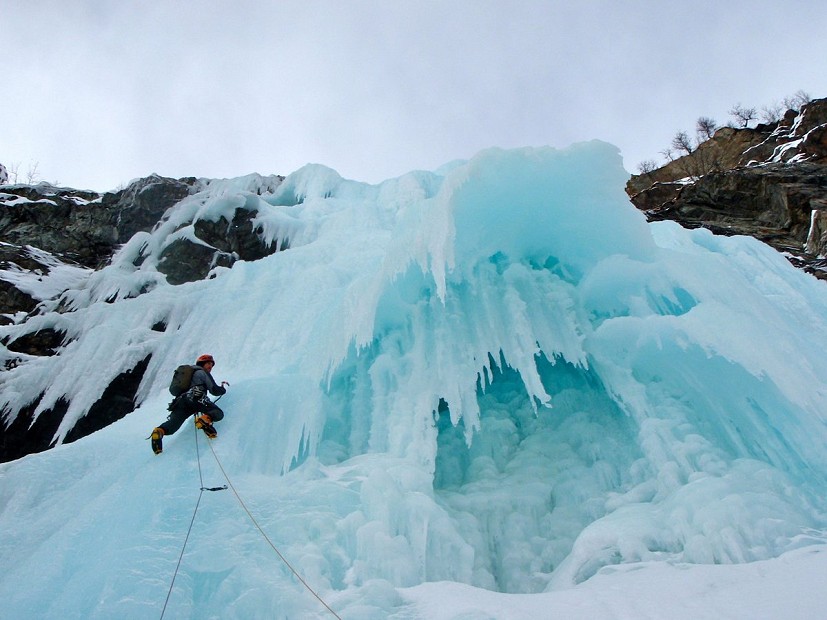
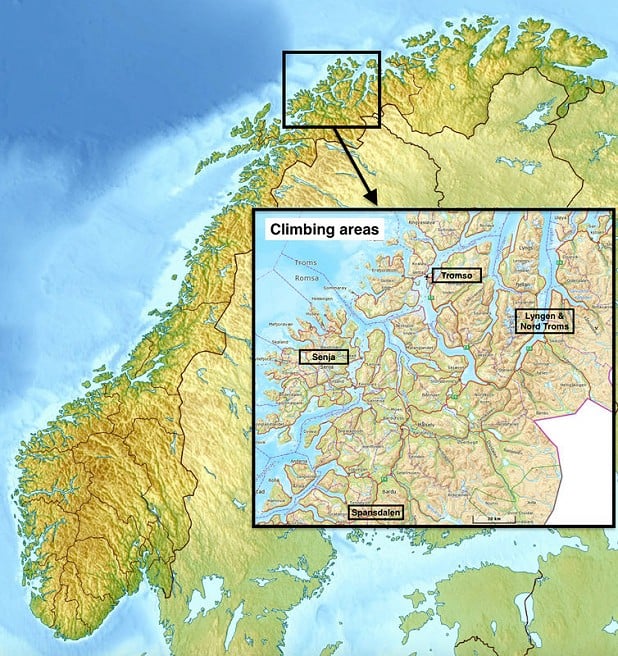
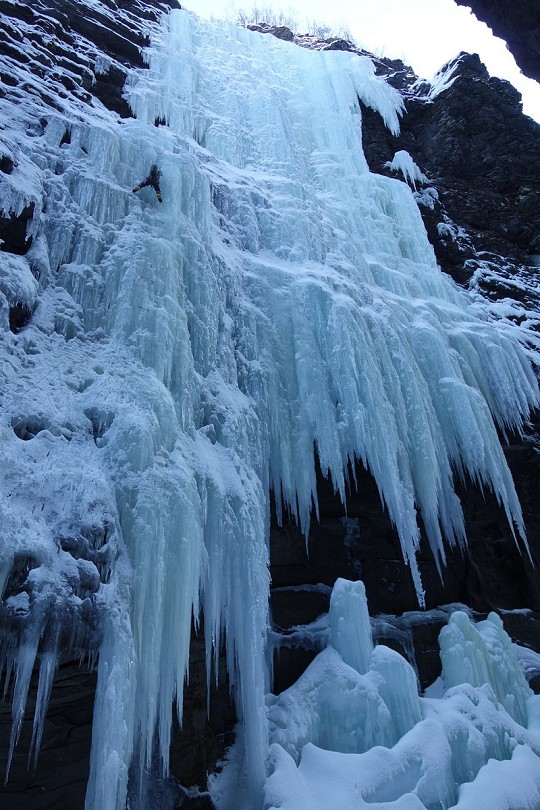

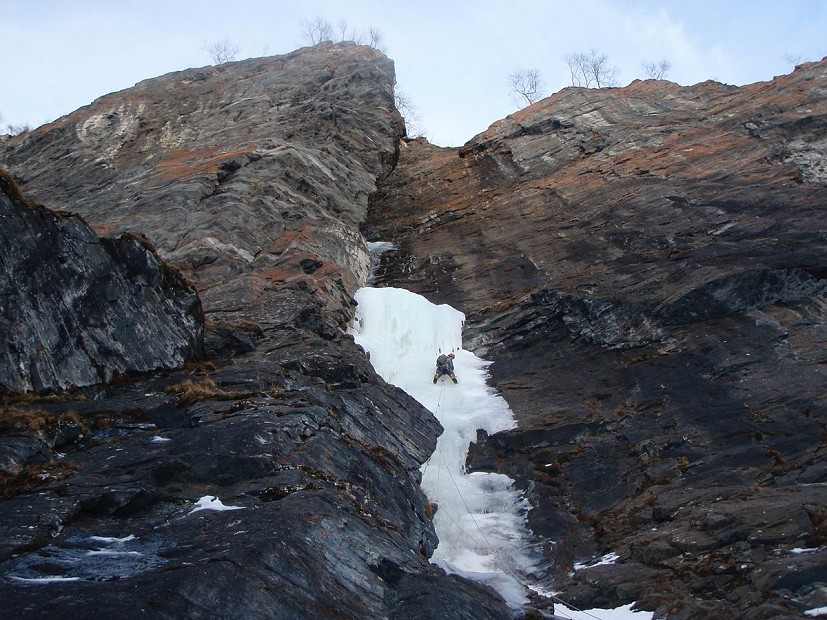
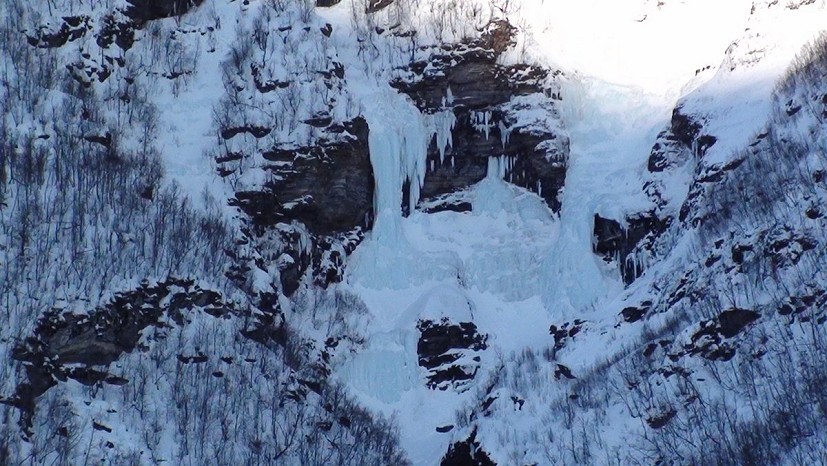
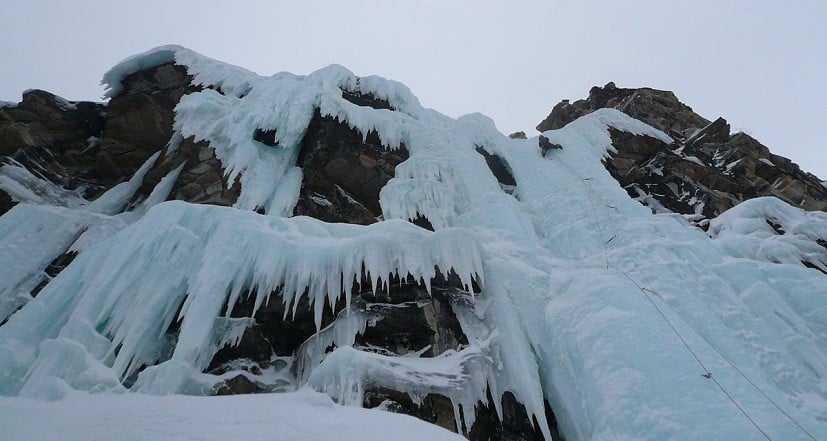


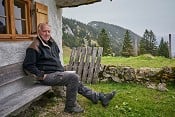
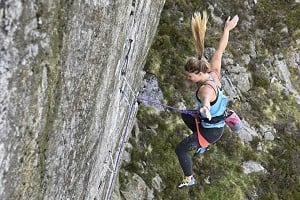
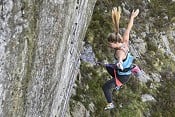
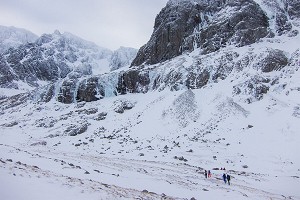
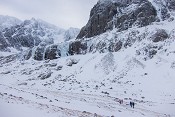



Comments